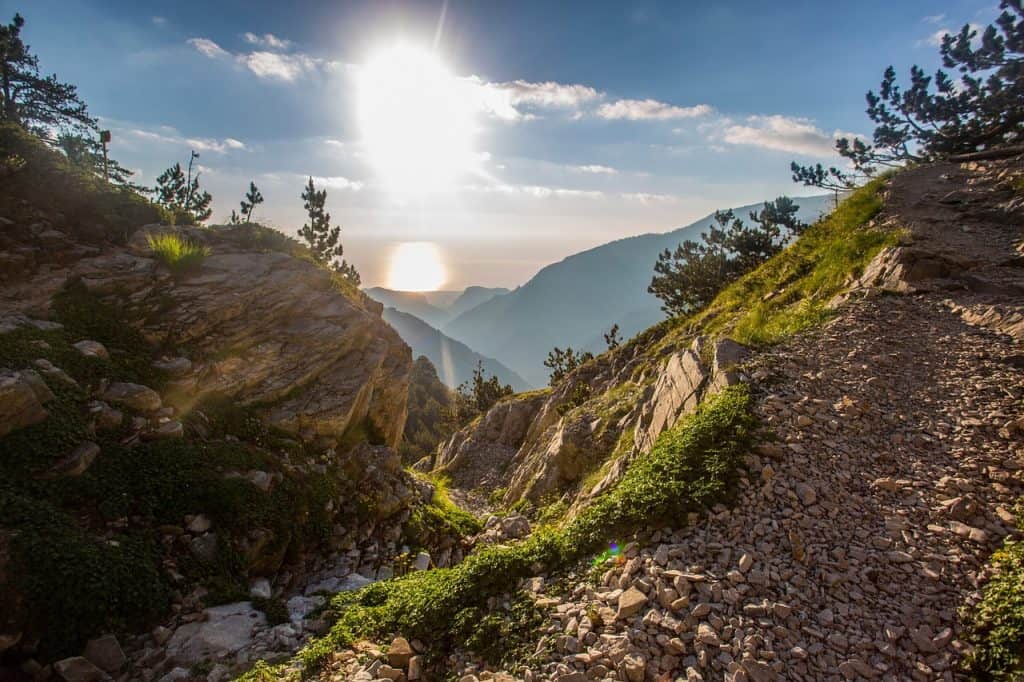9 Marvelous Greece Landmarks That You Shouldn’t Miss
Enchanting, intriguing, captivating, and ultra magnificent… these words aren’t enough to describe the charm and excellence of beautiful Greece! This European country is home to several sun-bleached ruins that reflect thousand-year-old stories and legends.
Greece also boasts stunning coastline, passionate music, inspiring culture, delicious cuisine, and thrill-seeking activities. It is a mini-paradise for the intrepid hedonists out there!
If you think that’s interesting enough, then wait until you visit these 13 jaw-dropping Greece landmarks,
Table of Contents
1. Acropolis of Athens
An acropolis is any citadel built on an elevated, fortified ground. One of the most famous acropolis in Greece is the Acropolis of Athens situated on a rocky outcrop above the city of Athens. This hilltop complex is home to several remains of ancient buildings with architectural and historic significance.
Acropolis of Athens, or The Acropolis (as locals call it), was known more properly as Cecropia, after the legendary Cercrops, the supposed first Athenian king and a legendary serpent-man.
Now, The Acropolis is listed among the UNESCO World Heritage Site.
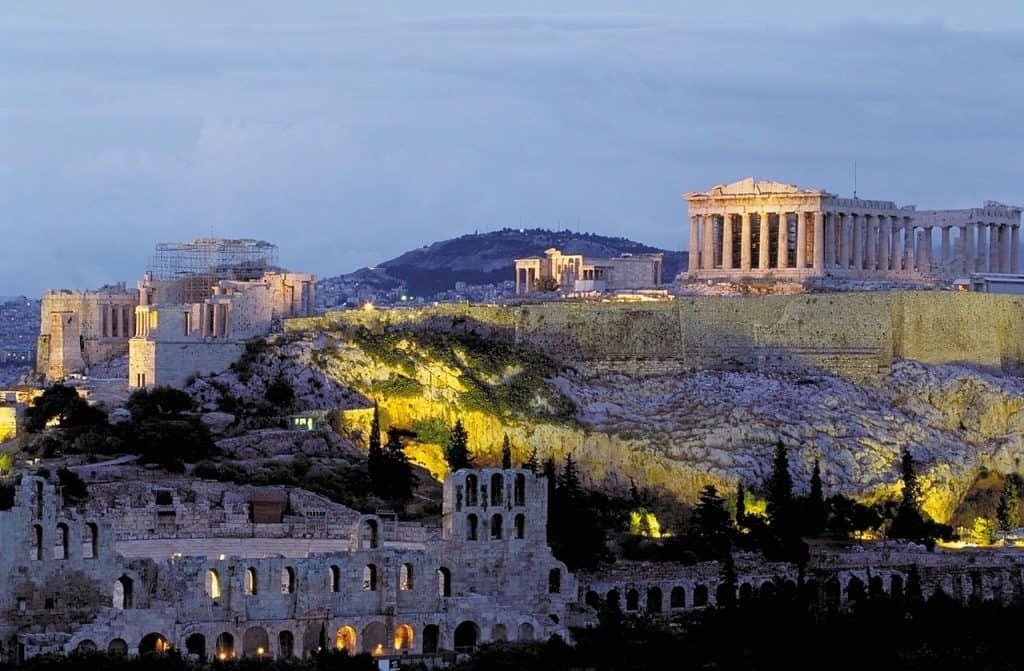
2. Parthenon
Among the significant historical complex in The Acropolis is the famous Parthenon. It served as a temple dedicated to the goddess Athen, whom the people of Athens considered their patron.
According to studies, the construction of Parthenon dates back to 447 BC when the Athenian Empire was with high power. The construction was finished in 438 BC.
Parthenon is one of the most important surviving buildings of Classical Greece, and its decorative sculpture and intricate design are considered the greatest in Greek art.
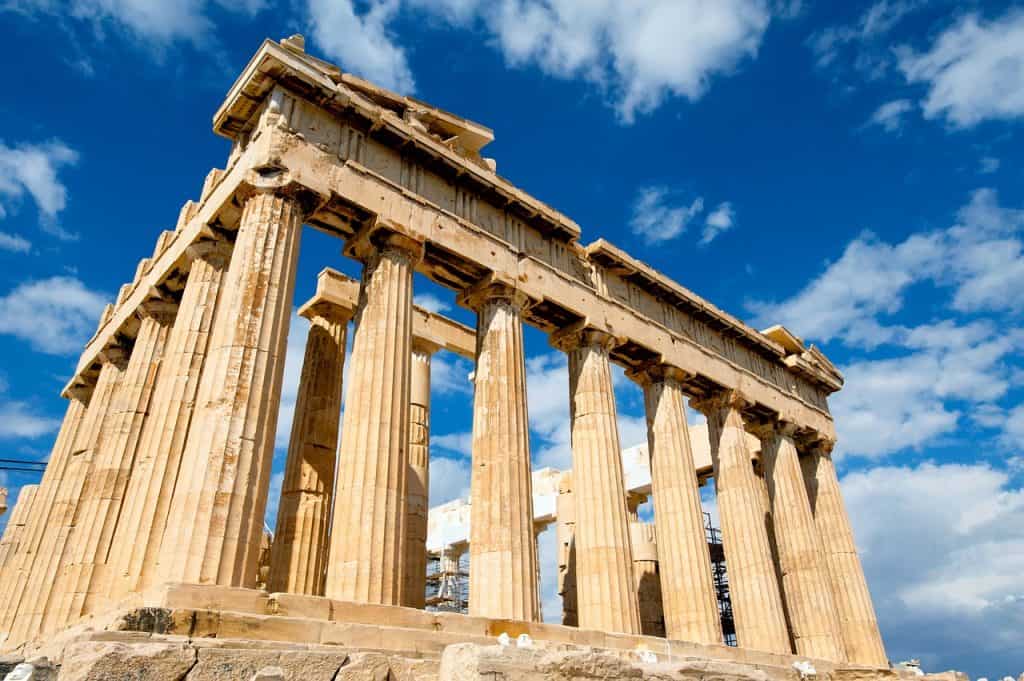
3. Meteora
Experience the breathtaking, serene, immense, mystical, magical, spiritual, and extraordinary Meteora to complete your Greece escapade.
Meteora is a famous Greece landmark featuring rock formation hosting one of the largest and most precipitously built complexes of Eastern Orthodox monasteries.
The unique and enormous columns of rock rise piercing the magnificent skyline.
A trip to Meteora will let you experience nature’s grandeur with embedded history, architecture, and human’s desire to connect with the Divine.
The vertical cliffs of Meteora have always been considered to be the best spot to achieve absolute solitude, a place to find peace and harmony to attain spiritual elevation.
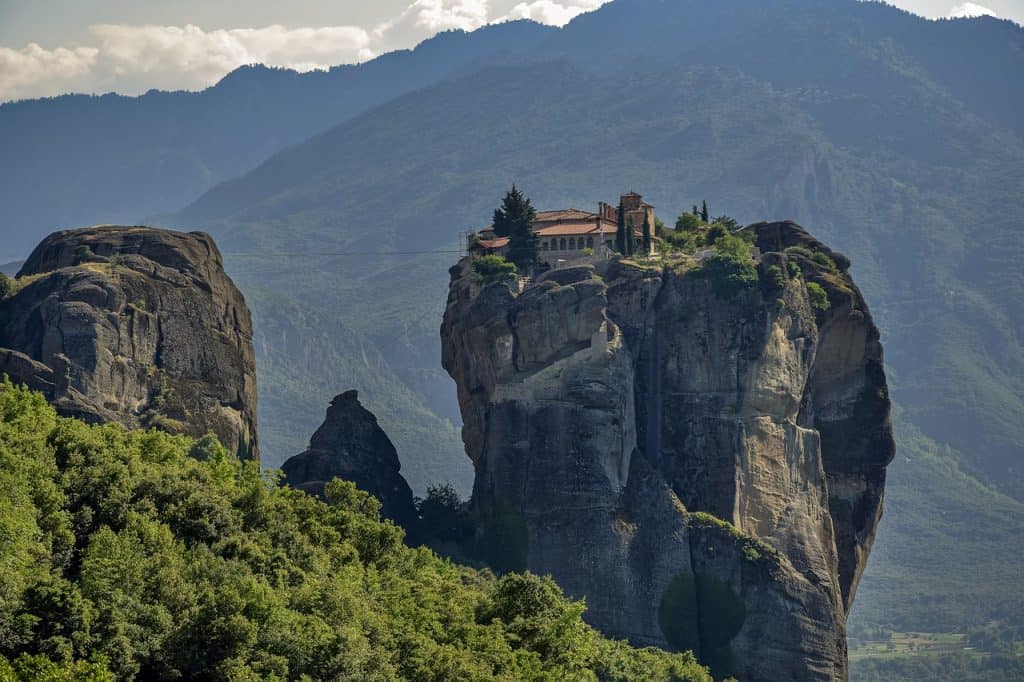
4. Acropolis Museum
The Acropolis Museum is home to thousands of findings from the Acropolis of Athens. The museum was built to keep every artifact found on the rock and its surroundings. It also houses findings from the ruins of a part of Roman and early Byzantine Athens.
A trip to the Acropolis Museum will surely entertain both young and old. The large, sparkling clean museum with excellent exhibits will enhance your visit to The Acropolis and Parthenon.
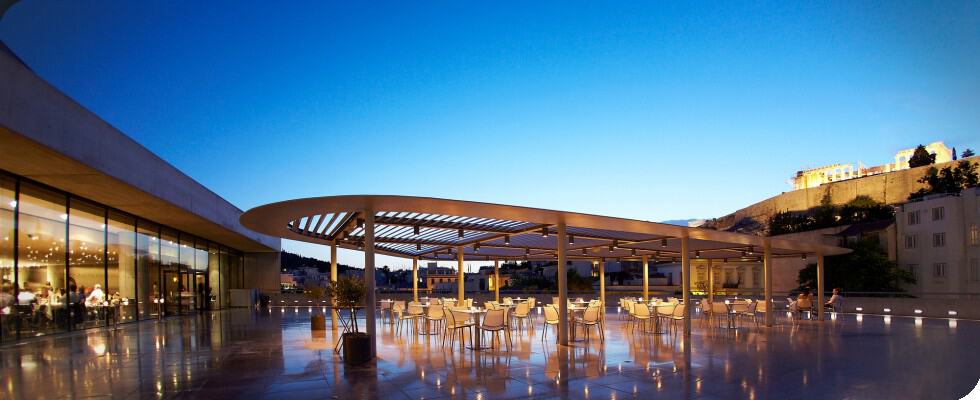
5. Temple of Olympian Zeus
Also known as the Columns of the Olympian Zeus or Olympieion, the Temple of Olympian Zeus is a former colossal temple situated at the heart of Athens, the capital of Greece.
The ancient complex was dedicated to Olympian Zeus, the head of the Olympian gods. According to history, the construction of the colossal temple started in 174 BCE and was completed in 131 CE by Roman emperor Hadrian.
The Olympieion is best known for its unusually tall columns and intricate layout, making the temple among the largest ever built in the ancient times.
The temple suffered for many years — something that’s obvious as you look closer to the columns. Much of its material was reused in other buildings.
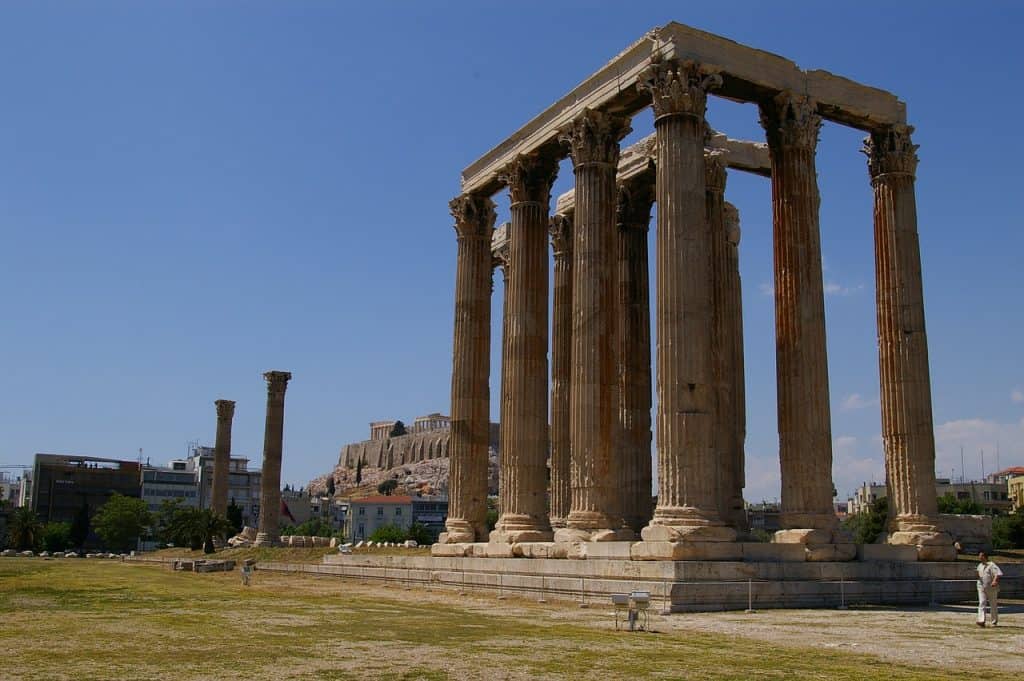
6. Elafonisi
Your trip to Greece wouldn’t be complete without visiting the paradise Elafonisi beach.
Tourists go crazy over this sandy beach. So, what’s the deal with Elafonisi? This Greece landmark and spot is actually an island separated by a shallow and pristine lagoon and a sandbar that is submerged under 1 meter of water at most during high tide.
The beach on the mainland that never gets submerged is populated by beach chairs, umbrellas, and beach loungers.
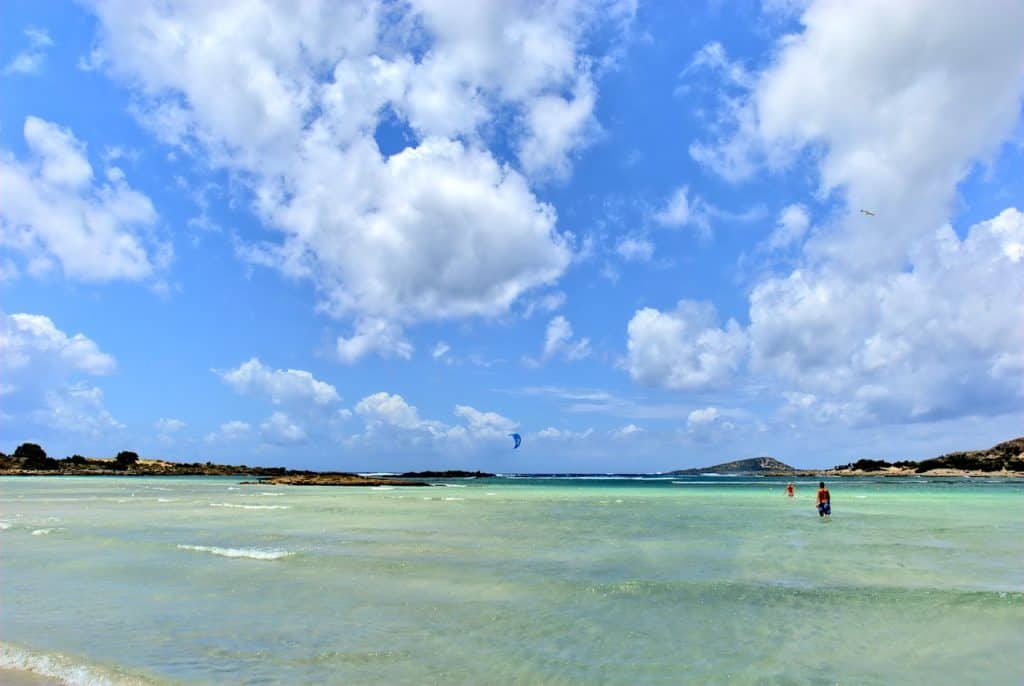
7. Mycenae
Mycenae is one of the top Greece landmarks and among the most important archaeological sites of the country. This fortified citadel is situated in the fertile plain of Argolis near the seashore in the northeastern Peloponnese.
This captivating citadel was the most important center of the civilization that was named Mycenaean.
There you will see the famous Lion Gate, which protects and provides the primary access to the famous citadel. Two lions were arranged symmetrically around a column — a great example of monumental sculpture in the European continent.
You will also see the magnificent Cyclopean Walls, the Palace of Mycenae, Tomb of Aegisthus, the Lion Tomb, and other sights that will surely leave you stunned.
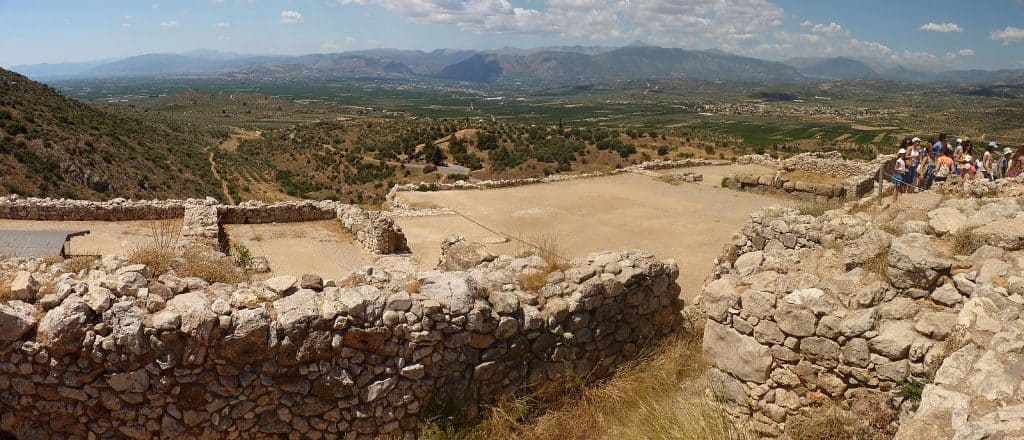
8. Delos
The island of Delos is one of the most significant, mythological, historical, and archaeological sites in Greece. Its location made the island a holy sanctuary for thousands of years before Olympian reek mythology made it the birthplace of Artemis and Apollo.
According to findings, the island is believed to have been inhabited since the 3rd millennium BCE.
The island houses the synagogue of Delos, which is one of the oldest known synagogues today, and indeed, has is a popular Greece landmark. It was built between 150 and 128 BCE and is believed to be an assembly hall for Jews or Samaritans. However, the identification of the building as a synagogue has been a matter of debate for many years.
Delos was discovered in 1912 by a team of archeologists led by Andre Plassart. The impressive feature of the building is the large hall, which was presumably used in various ways with movable furniture.
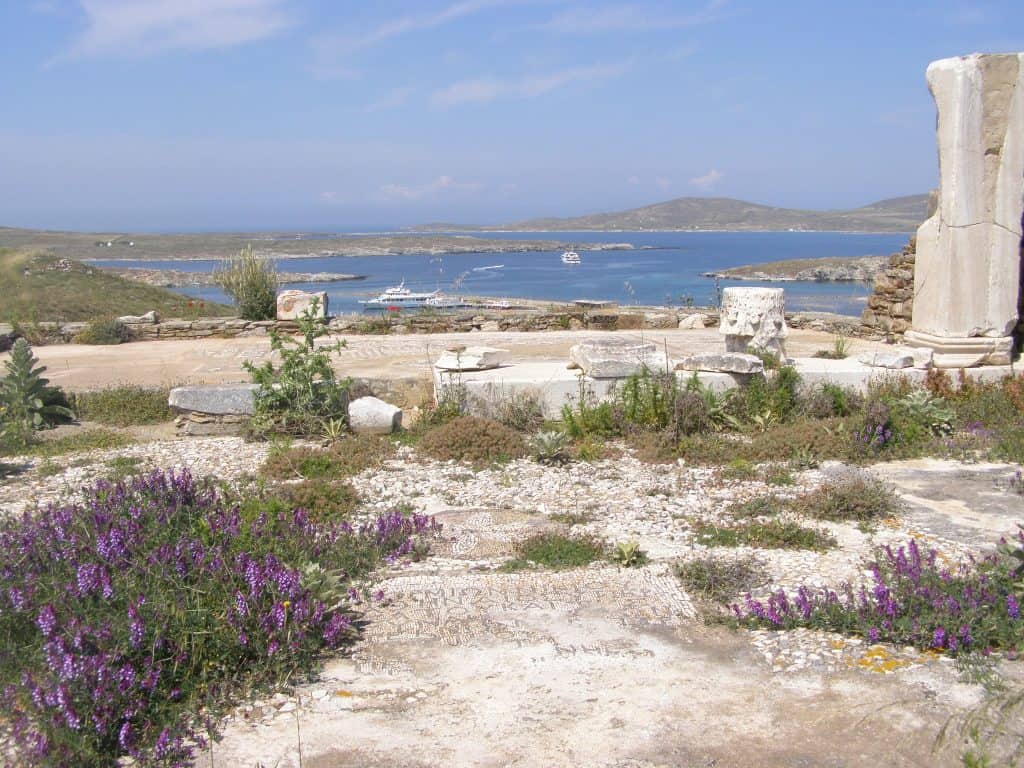
9.Mount Olympus
Perhaps, one of the most popular Greece landmarks is Mount Olympus, the highest mountain in the country. The impressive and mighty mountain has 52 peaks and deep gorges. The highest peak is the Mytikas, which means nose. Mystika rises to 9,570 feet and is considered as one of the highest peaks in Europe (in terms of topographic prominence).
The magnificent Mount Olympus is the home of the Greek gods, according to Greek mythology. It has been a National park since 1938 and is listed as a World Biosphere Reserve.
Whether you’re a fan of Greek legends or just a nature lover, the imposing Mount Olympus won’t disappoint you. It’s breathtaking, captivating, and incredibly beautiful.
